#South Africa historical sites
Text
South Africa’s Winelands: Experiencing the Best Vines and Views
#adventure travel South Africa#best safari in South Africa#best time to visit South Africa#budget travel in South Africa#Cape Town#Cape Town attractions#cultural trips in Durban#Drakensberg hiking#Durban beaches#Durban's Sunny Shores and Cultural Mix#eco-tourism in South Africa#Garden Route itinerary#Kruger National Park#Kruger National Park safari#luxury travel South Africa#Robben Island history#South Africa#South Africa family vacation#South Africa historical sites#South Africa road trips#South Africa travel guide#South Africa wildlife tours#South African Winelands#Table Mountain tours#The Drakensberg Mountains#The Garden Route#The Winelands
0 notes
Text

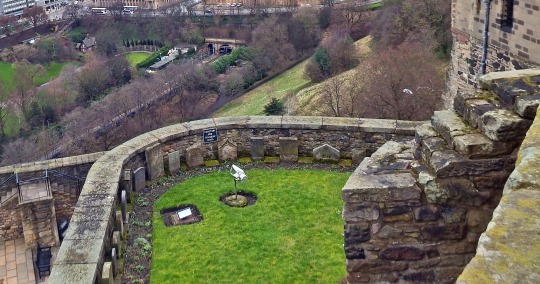

Edinburgh Castle's dog cemetery.
Looking down to the wee graveyard last week.
Hidden within the grounds of Edinburgh Castle, a dedicated dog cemetery may be the landmark's strangest feature.
There are a huge number of fascinating historical stories hidden within the walls of Edinburgh Castle, but perhaps none so curious and touching as the tale behind the castle’s dog cemetery.
The small green space is thought to have originally been the site of a medieval tower, but since 1840 it has been the final resting place for regimental mascots or honoured dogs belonging to high-ranking soldiers.
The cemetery is referenced in this verse from the Scottish Bard, Robert Burns:
”Berkin dugs here lie at rest
”The yappin worst, obedient best
”Sodgers pets and mascots tae
”Still the guard the castle to this day.
One of only two like it in Scotland, the unique graveyard is home to more than 20 headstones.
Sadly, several of the inscriptions have worn away over the last century or so, probably thanks to Edinburgh’s signature chilly, wet and windy weather.
Of the engravings still visible, the oldest dates back to 1881 - a dedication to Jess, band pet of the Black Watch 42nd Royal Highlanders.
The newest headstone in the cemetery belongs to Winkle, the “dear and faithful friend of Lady Gow and the Governor”, who died in 1980.
Other faithful pups laid to rest here include Yum Yum, Tim and Dobbler, who travelled as far as China, Sri Lanka and South Africa with the Argyll and Sutherland Highlanders.
These days, visitors to the castle cannot enter the cemetery, but it can be viewed from above, like I did.
582 notes
·
View notes
Text
essential reading.
Opinion - There is a Jewish Hope for Palestinian Liberation. It Must Survive. - by Peter Beinart
And perhaps one day, when it finally becomes hideously clear that Hamas cannot free Palestinians by murdering children and Israel cannot subdue Gaza, even by razing it to the ground, those communities may become the germ of a mass movement for freedom that astonishes the world, as Black and white South Africans did decades ago. I’m confident I won’t live to see it. No gambler would stake a bet on it happening at all. But what’s the alternative, for those of us whose lives and histories are bound up with that small, ghastly, sacred place?
"In 1988, bombs exploded at restaurants, sporting events and arcades in South Africa. In response, the African National Congress, then in its 77th year of a struggle to overthrow white domination, did something remarkable: It accepted responsibility and pledged to prevent its fighters from conducting such operations in the future. Its logic was straightforward: Targeting civilians is wrong. “Our morality as revolutionaries,” the A.N.C. declared, “dictates that we respect the values underpinning the humane conduct of war.”
Historically, geographically and morally, the A.N.C. of 1988 is a universe away from the Hamas of 2023, so remote that its behavior may seem irrelevant to the horror that Hamas unleashed last weekend in southern Israel. But South Africa offers a counter-history, a glimpse into how ethical resistance works and how it can succeed. It offers not an instruction manual, but a place — in this season of agony and rage — to look for hope.
There was nothing inevitable about the A.N.C.’s policy, which, as Jeff Goodwin, a New York University sociologist, has documented, helped ensure that there was “so little terrorism in the anti-apartheid struggle.” So why didn’t the A.N.C. carry out the kind of gruesome massacres for which Hamas has become notorious? There’s no simple answer. But two factors are clear. First, the A.N.C.’s strategy for fighting apartheid was intimately linked to its vision of what should follow apartheid. It refused to terrify and traumatize white South Africans because it wasn’t trying to force them out. It was trying to win them over to a vision of a multiracial democracy.
ADVERTISEMENT
Second, the A.N.C. found it easier to maintain moral discipline — which required it to focus on popular, nonviolent resistance and use force only against military installations and industrial sites — because its strategy was showing signs of success. By 1988, when the A.N.C. expressed regret for killing civilians, more than 150 American universities had at least partially divested from companies doing business in South Africa, and the United States Congress had imposed sanctions on the apartheid regime. The result was a virtuous cycle: Ethical resistance elicited international support, and international support made ethical resistance easier to sustain.
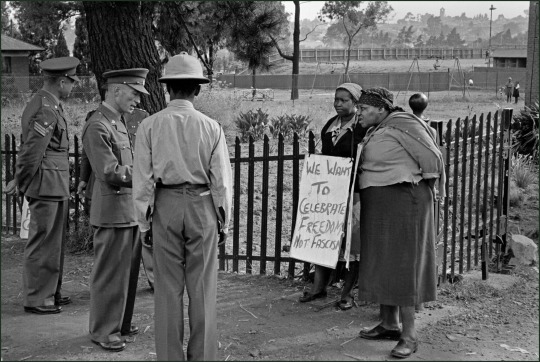
In Israel today, the dynamic is almost exactly the opposite. Hamas, whose authoritarian, theocratic ideology could not be farther from the A.N.C.’s, has committed an unspeakable horror that may damage the Palestinian cause for decades to come. Yet when Palestinians resist their oppression in ethical ways — by calling for boycotts, sanctions and the application of international law — the United States and its allies work to ensure that those efforts fail, which convinces many Palestinians that ethical resistance doesn’t work, which empowers Hamas.
The savagery Hamas committed on Oct. 7 has made reversing this monstrous cycle much harder. It could take a generation. It will require a shared commitment to ending Palestinian oppression in ways that respect the infinite value of every human life. It will require Palestinians to forcefully oppose attacks on Jewish civilians, and Jews to support Palestinians when they resist oppression in humane ways — even though Palestinians and Jews who take such steps will risk making themselves pariahs among their own people. It will require new forms of political community, in Israel-Palestine and around the world, built around a democratic vision powerful enough to transcend tribal divides. The effort may fail. It has failed before. The alternative is to descend, flags waving, into hell.
As Jewish Israelis bury their dead and recite psalms for their captured, few want to hear at this moment that millions of Palestinians lack basic human rights. Neither do many Jews abroad. I understand; this attack has awakened the deepest traumas of our badly scarred people. But the truth remains: The denial of Palestinian freedom sits at the heart of this conflict, which began long before Hamas’s creation in the late 1980s.
Most of Gaza’s residents aren’t from Gaza. They’re the descendants of refugees who were expelled, or fled in fear, during Israel’s war of independence in 1948. They live in what Human Rights Watch has called an “open-air prison,” penned in by an Israeli state that — with help from Egypt — rations everything that goes in and out, from tomatoes to the travel documents children need to get lifesaving medical care. From this overcrowded cage, which the United Nations in 2017 declared “unlivable” for many residents in part because it lacks electricity and clean water, many Palestinians in Gaza can see the land that their parents and grandparents called home, though most may never step foot in it.
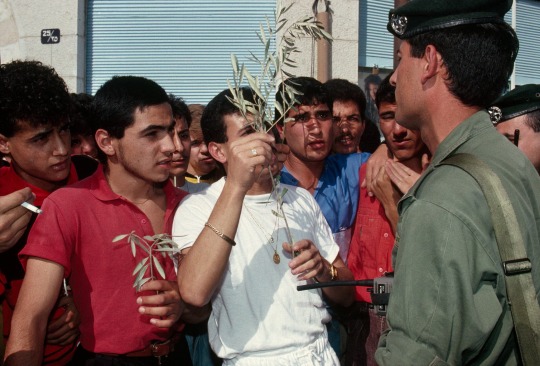
Palestinians in the West Bank are only slightly better off. For more than half a century, they have lived without due process, free movement, citizenship or the ability to vote for the government that controls their lives. Defenseless against an Israeli government that includes ministers openly committed to ethnic cleansing, many are being driven from their homes in what Palestinians compare to the mass expulsions of 1948. Americans and Israeli Jews have the luxury of ignoring these harsh realities. Palestinians do not. Indeed, the commander of Hamas’s military wing cited attacks on Palestinians in the West Bank in justifying its barbarism last weekend.
Just as Black South Africans resisted apartheid, Palestinians resist a system that has earned the same designation from the world’s leading human rights organizations and Israel’s own. After last weekend, some critics may claim Palestinians are incapable of resisting in ethical ways. But that’s not true. In 1936, during the British mandate, Palestinians began what some consider the longest anticolonial general strike in history. In 1976, on what became known as Land Day, thousands of Palestinian citizens demonstrated against the Israeli government’s seizure of Palestinian property in Israel’s north. The first intifada against Israel’s occupation of the West Bank and the Gaza Strip, which lasted from roughly 1987 to 1993, consisted primarily of nonviolent boycotts of Israeli goods and a refusal to pay Israeli taxes. While some Palestinians threw stones and Molotov cocktails, armed attacks were rare, even in the face of an Israeli crackdown that took more than 1,000 Palestinian lives. In 2005, 173 Palestinian civil society organizations asked “people of conscience all over the world to impose broad boycotts and implement divestment initiatives against Israel similar to those applied to South Africa in the apartheid era.”
But in the United States, Palestinians received little credit for trying to follow Black South Africans’ largely nonviolent path. Instead, the Boycott, Divestment and Sanctions movement’s call for full equality, including the right of Palestinian refugees to return home, was widely deemed antisemitic because it conflicts with the idea of a state that favors Jews.
It is true that these nonviolent efforts sit uncomfortably alongside an ugly history of civilian massacres: the murder of 67 Jews in Hebron in 1929 by local Palestinians after Haj Amin al-Husseini, the grand mufti of Jerusalem, claimed Jews were about to seize Al Aqsa Mosque; the airplane hijackings of the late 1960s and 1970s carried out primarily by the leftist Popular Front for the Liberation of Palestine and Yasir Arafat’s nationalist Fatah faction; the 1972 assassination of Israeli athletes in Munich carried out by the Palestinian organization Black September; and the suicide bombings of the 1990s and 2000s conducted by Hamas, Palestinian Islamic Jihad and Fatah’s Aqsa Martyrs Brigades, whose victims included a friend of mine in rabbinical school who I dreamed might one day officiate my wedding.
And yet it is essential to remember that some Palestinians courageously condemned this inhuman violence. In 1979, Edward Said, the famed literary critic, declared himself “horrified at the hijacking of planes, the suicidal missions, the assassinations, the bombing of schools and hotels.” Rashid Khalidi, a Palestinian American historian, called the suicide bombings of the second intifada “a war crime.” After Hamas’s attack last weekend, a member of the Israeli parliament, Ayman Odeh, among the most prominent leaders of Israel’s Palestinian citizens, declared, “It is absolutely forbidden to accept any attacks on the innocent.”Tragically, this vision of ethical resistance is being repudiated by some pro-Palestinian activists in the United States. In a statement last week, National Students for Justice in Palestine, which represents more than 250 Palestinian solidarity groups in North America, called Hamas’s attack “a historic win for the Palestinian resistance” that proves that “total return and liberation to Palestine is near” and added, “from Rhodesia to South Africa to Algeria, no settler colony can hold out forever.” One of its posters featured a paraglider that some Hamas fighters used to enter Israel.
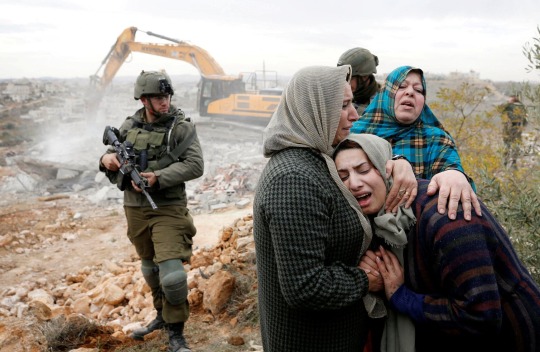
The reference to Algeria reveals the delusion underlying this celebration of abduction and murder. After eight years of hideous war, Algeria’s settlers returned to France. But there will be no Algerian solution in Israel-Palestine. Israel is too militarily powerful to be conquered. More fundamentally, Israeli Jews have no home country to which to return. They are already home.
Mr. Said understood this. “The Israeli Jew is there in the Middle East,” he advised Palestinians in 1974, “and we cannot, I might even say that we must not, pretend that he will not be there tomorrow, after the struggle is over.” The Jewish “attachment to the land,” he added, “is something we must face.” Because Mr. Said saw Israeli Jews as something other than mere colonizers, he understood the futility — as well as the immorality — of trying to terrorize them into flight.
The failure of Hamas and its American defenders to recognize that will make it much harder for Jews and Palestinians to resist together in ethical ways. Before last Saturday, it was possible, with some imagination, to envision a joint Palestinian-Jewish struggle for the mutual liberation of both peoples. There were glimmers in the protest movement against Benjamin Netanyahu’s judicial overhaul, through which more and more Israeli Jews grasped a connection between the denial of rights to Palestinians and the assault on their own. And there were signs in the United States, where almost 40 percent of American Jews under the age of 40 told the Jewish Electoral Institute in 2021 that they considered Israel an apartheid state. More Jews in the United States, and even Israel, were beginning to see Palestinian liberation as a form of Jewish liberation as well.
That potential alliance has now been gravely damaged. There are many Jews willing to join Palestinians in a movement to end apartheid, even if doing so alienates us from our communities, and in some cases, our families. But we will not lock arms with people who cheer the kidnapping or murder of a Jewish child.
The struggle to persuade Palestinian activists to repudiate Hamas’s crimes, affirm a vision of mutual coexistence and continue the spirit of Mr. Said and the A.N.C. will be waged inside the Palestinian camp. The role of non-Palestinians is different: to help create the conditions that allow ethical resistance to succeed.
Palestinians are not fundamentally different from other people facing oppression: When moral resistance doesn’t work, they try something else. In 1972, the Northern Ireland Civil Rights Association, which was modeled on the civil rights movement in the United States, organized a march to oppose imprisonment without trial. Although some organizations, most notably the Provisional Irish Republican Army, had already embraced armed resistance, they grew stronger after British soldiers shot 26 unarmed civilians in what became known as Bloody Sunday. By the early 1980s, the Irish Republican Army had even detonated a bomb outside Harrods, the department store in London. As Kirssa Cline Ryckman, a political scientist, observed in a 2019 paper on why certain movements turn violent, a lack of progress in peaceful protest “can encourage the use of violence by convincing demonstrators that nonviolence will fail to achieve meaningful concessions.”
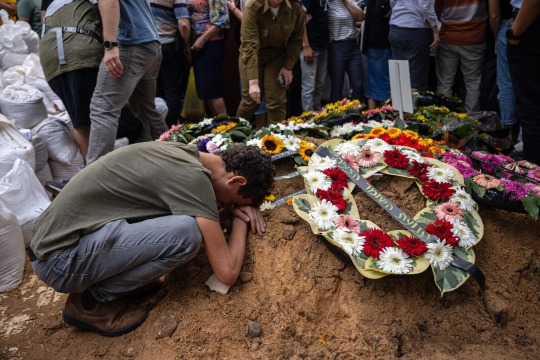
Israel, with America’s help, has done exactly that. It has repeatedly undermined Palestinians who sought to end Israel’s occupation through negotiations or nonviolent pressure. As part of the 1993 Oslo Accords, the Palestine Liberation Organization renounced violence and began working with Israel — albeit imperfectly — to prevent attacks on Israelis, something that revolutionary groups like the A.N.C. and the Irish Republican Army never did while their people remained under oppression. At first, as Khalil Shikaki, a Palestinian political scientist, has detailed, Palestinians supported cooperation with Israel because they thought it would deliver them a state. In early 1996, Palestinian support for the Oslo process reached 80 percent while support for violence against Israelis dropped to 20 percent.
The 1996 election of Benjamin Netanyahu, and the failure of Israel and its American patron to stop settlement growth, however, curdled Palestinian sentiment. Many Jewish Israelis believe that Ehud Barak, who succeeded Mr. Netanyahu, offered Palestinians a generous deal in 2000. Most Palestinians, however, saw Mr. Barak’s offer as falling far short of a fully sovereign state along the 1967 lines. And their disillusionment with a peace process that allowed Israel to entrench its hold over the territory on which they hoped to build their new country ushered in the violence of the second intifada. In Mr. Shikaki’s words, “The loss of confidence in the ability of the peace process to deliver a permanent agreement on acceptable terms had a dramatic impact on the level of Palestinian support for violence against Israelis.” As Palestinians abandoned hope, Hamas gained power.
After the brutal years of the second intifada, in which Hamas and other Palestinian armed groups repeatedly targeted Israeli civilians, President Mahmoud Abbas of the Palestinian Authority and Salam Fayyad, his prime minister from 2007 to 2013, worked to restore security cooperation and prevent anti-Israeli violence once again. Yet again, the strategy failed. The same Israeli leaders who applauded Mr. Fayyad undermined him in back rooms by funding the settlement growth that convinced Palestinians that security cooperation was bringing them only deepening occupation. Mr. Fayyad, in an interview with The Times’s Roger Cohen before he left office in 2013, admitted that because the “occupation regime is more entrenched,” Palestinians “question whether the P.A. can deliver. Meanwhile, Hamas gains recognition and is strengthened.”
As Palestinians lost faith that cooperation with Israel could end the occupation, many appealed to the world to hold Israel accountable for its violation of their rights. In response, both Democratic and Republican presidents have worked diligently to ensure that these nonviolent efforts fail. Since 1997, the United States has vetoed more than a dozen United Nations Security Council resolutions criticizing Israel for its actions in the West Bank and Gaza. This February, even as Israel’s far-right government was beginning a huge settlement expansion, the Biden administration reportedly wielded a veto threat to drastically dilute a Security Council resolution that would have condemned settlement growth.
Washington’s response to the International Criminal Court’s efforts to investigate potential Israeli war crimes is equally hostile. Despite lifting sanctions that the Trump administration imposed on I.C.C. officials investigating the United States’s conduct in Afghanistan, the Biden team remains adamantly opposed to any I.C.C. investigation into Israel’s actions.
The Boycott, Divestment and Sanctions movement, or B.D.S., which was founded in 2005 as a nonviolent alternative to the murderous second intifada and which speaks in the language of human rights and international law, has been similarly stymied, including by many of the same American politicians who celebrated the movement to boycott, divest from and sanction South Africa. Joe Biden, who is proud of his role in passing sanctions against South Africa, has condemned the B.D.S. movement, saying it “too often veers into antisemitism.” About 35 states — some of which once divested state funds from companies doing business in apartheid South Africa — have passed laws or issued executive orders punishing companies that boycott Israel. In many cases, those punishments apply even to businesses that boycott only Israeli settlements in the West Bank.
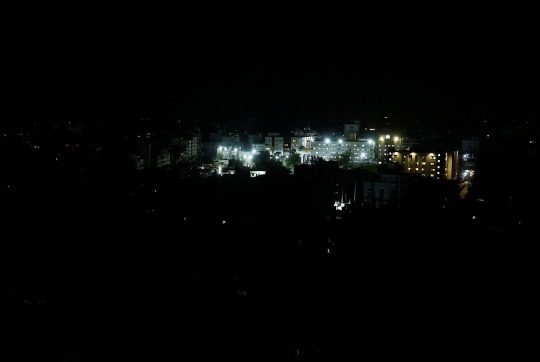
Palestinians have noticed. In the words of Dana El Kurd, a Palestinian American political scientist, “Palestinians have lost faith in the efficacy of nonviolent protest as well as the possible role of the international community.” Mohammed Deif, the commander of Hamas’s military wing, cited this disillusionment during last Saturday’s attack. “In light of the orgy of occupation and its denial of international laws and resolutions, and in light of American and Western support and international silence,” he declared, “we’ve decided to put an end to all this.”
Hamas — and no one else — bears the blame for its sadistic violence. But it can carry out such violence more easily, and with less backlash from ordinary Palestinians, because even many Palestinians who loathe the organization have lost hope that moral strategies can succeed. By treating Israel radically differently from how the United States treated South Africa in the 1980s, American politicians have made it harder for Palestinians to follow the A.N.C.’s ethical path. The Americans who claim to hate Hamas the most have empowered it again and again.
Israelis have just witnessed the greatest one-day loss of Jewish life since the Holocaust. For Palestinians, especially in Gaza, where Israel has now ordered more than one million people in the north to leave their homes, the days to come are likely to bring dislocation and death on a scale that should haunt the conscience of the world. Never in my lifetime have the prospects for justice and peace looked more remote. Yet the work of moral rebuilding must begin. In Israel-Palestine and around the world, pockets of Palestinians and Jews, aided by people of conscience of all backgrounds, must slowly construct networks of trust based on the simple principle that the lives of both Palestinians and Jews are precious and inextricably intertwined.
Israel desperately needs a genuinely Jewish and Palestinian political party, not because it can win power but because it can model a politics based on common liberal democratic values, not tribe. American Jews who rightly hate Hamas but know, in their bones, that Israel’s treatment of Palestinians is profoundly wrong must ask themselves a painful question: What nonviolent forms of Palestinian resistance to oppression will I support? More Palestinians and their supporters must express revulsion at the murder of innocent Israeli Jews and affirm that Palestinian liberation means living equally alongside them in safety and freedom.
From those reckonings, small, beloved communities can be born, and grow. And perhaps one day, when it finally becomes hideously clear that Hamas cannot free Palestinians by murdering children and Israel cannot subdue Gaza, even by razing it to the ground, those communities may become the germ of a mass movement for freedom that astonishes the world, as Black and white South Africans did decades ago. I’m confident I won’t live to see it. No gambler would stake a bet on it happening at all. But what’s the alternative, for those of us whose lives and histories are bound up with that small, ghastly, sacred place?
Like many others who care about the lives of both Palestinians and Jews, I have felt in recent days the greatest despair I have ever known. On Wednesday, a Palestinian friend sent me a note of consolation. She ended it with the words “only together.” Maybe that can be our motto.
#articles#definitely one of the best most extensive most personal most meaningful articles i've read this week#also addresses a LOT of uh. talking points recently
290 notes
·
View notes
Text
Calling Long-Distance: 10 Stellar Moments in 2022 for Space Communications and Navigation
Just like your phone needs Wi-Fi or data services to text or call – NASA spacecraft need communication services.
Giant antennas on Earth and a fleet of satellites in space enable missions to send data and images back to our home planet and keep us in touch with our astronauts in space. Using this data, scientists and engineers can make discoveries about Earth, the solar system, and beyond. The antennas and satellites make up our space communications networks: the Near Space Network and Deep Space Network.
Check out the top ten moments from our space comm community:
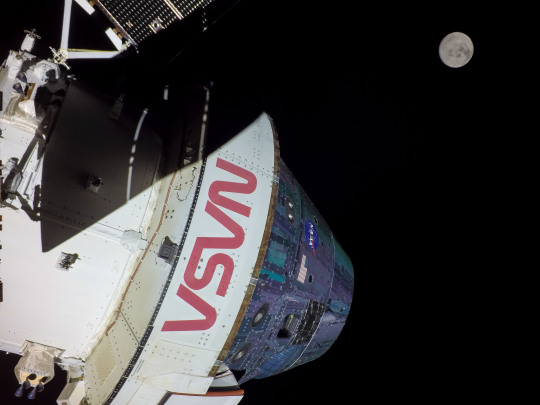
1. Space communication networks helped the Artemis I mission on its historic journey to the Moon. From the launch pad to the Moon and back, the Near Space Network and Deep Space Network worked hand-in-hand to seamlessly support Artemis I. These networks let mission controllers send commands up to the spacecraft and receive important spacecraft health data, as well as incredible images of the Moon and Earth.
The Pathfinder Technology Demonstration 3 spacecraft with hosted TeraByte InfraRed Delivery (TBIRD) payload communicating with laser links down to Earth. Credit: NASA/Ames Research Center
2. Spacecraft can range in size – from the size of a bus to the size of a cereal box. In May 2022, we launched a record-breaking communication system the size of a tissue box. TBIRD showcases the benefits of a laser communications system, which uses infrared light waves rather than radio waves to communicate more data at once. Just like we have upgraded from 3G to 4G to 5G on our phones, we are upgrading its space communications capabilities by implementing laser comms!

3. The Deep Space Network added a new 34-meter (111-foot) antenna to continue supporting science and exploration missions investigating our solar system and beyond. Deep Space Station 53 went online in February 2022 at our Madrid Deep Space Communications Complex. It is the fourth of six antennas being added to expand the network’s capacity.

4. You’ve probably seen in the news that there are a lot of companies working on space capabilities. The Near Space Network is embracing the aerospace community’s innovative work and seeking out multiple partnerships. In 2022, we met with over 300 companies in hopes of beginning new collaborative efforts and increasing savings.

5. Similar to TBIRD, we're developing laser comms for the International Space Station. The terminal will show the benefits of laser comms while using a new networking technique called High Delay/Disruption Tolerant Networking that routes data four times faster than current systems. This year, engineers tested and proved the capability in a lab.

6. In 2021, we launched the James Webb Space Telescope, a state-of-the-art observatory to take pictures of our universe. This year, the Deep Space Network received the revolutionary first images of our solar system from Webb. The telescope communicates with the network’s massive antennas at three global complexes in Canberra, Australia; Madrid, Spain; and Goldstone, California.
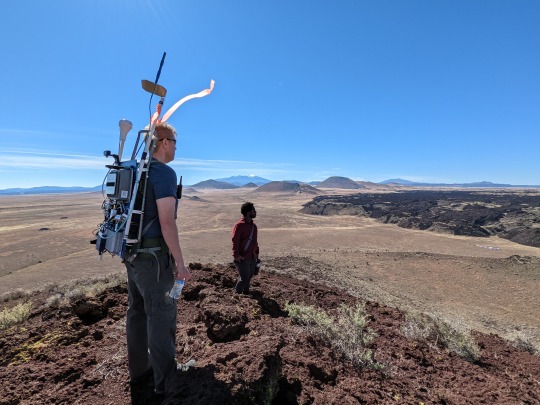
7. Just like we use data services on our phone to communicate, we'll do the same with future rovers and astronauts exploring the Moon. In 2022, the Lunar LTE Studies project, or LunarLiTES, team conducted two weeks of testing in the harsh depths of the Arizona desert, where groundbreaking 4G LTE communications data was captured in an environment similar to the lunar South Pole. We're using this information to determine the best way to use 4G and 5G networking on the Moon.
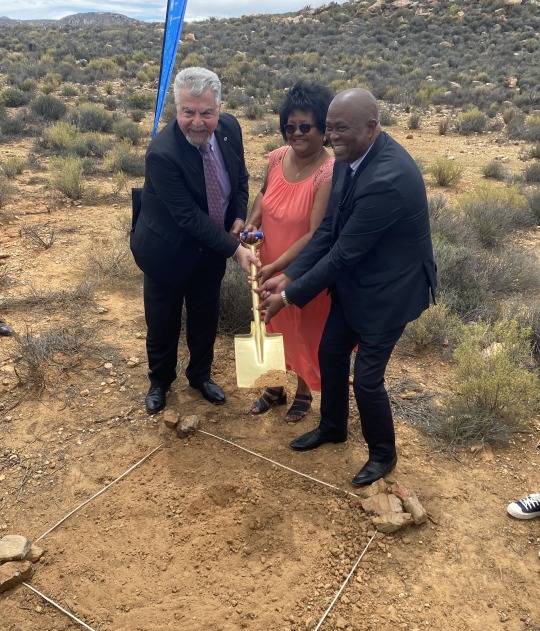
8. A new Near Space Network antenna site was unveiled in Matjiesfontein, South Africa. NASA and the South African Space Agency celebrated a ground-breaking at the site of a new comms antenna that will support future Artemis Moon missions. Three ground stations located strategically across the globe will provide direct-to-Earth communication and navigation capabilities for lunar missions.

9. Quantum science aims to better understand the world around us through the study of extremely small particles. April 14, 2022, marked the first official World Quantum Day celebration, and we participated alongside other federal agencies and the National Quantum Coordination Office. From atomic clocks to optimizing laser communications, quantum science promises to greatly improve our advances in science, exploration, and technology.

10. We intentionally crashed a spacecraft into an asteroid to test technology that could one day be used to defend Earth from asteroids. The Double Asteroid Redirection Test, or DART, mission successfully collided with the asteroid Dimorphos at a rate of 4 miles per second (6.1 kilometers per second), with real-time video enabled by the Deep Space Network. Alongside communications and navigation support, the global network also supports planetary defense by tracking near-Earth objects.
We look forward to many more special moments connecting Earth to space in the coming year.
Make sure to follow us on Tumblr for your regular dose of space!
1K notes
·
View notes
Note
Can you explain Palestine vs Israel. I have done my own research and still do not understand. From my understanding Palestine attacked Israel first, and this war has been going on for so much longer than just now. So why is it suddenly so important and how is Israel in the wrong?? Genuinely trying to understand since you are spreading news of the Genocide on your page.
hey so i cant really explain all the complexities and details in a singular tumblr post. i dont really know how much research you did if october 7th is your earliest knowledge of ‘attack.’ israel has been an apartheid state since 1948 and during that year they were downright deplorable to palestinians to get them to be conpliant. nakba is probably the most notorious case but there is more.
this issue is important because this is the first time we see such atrocities in mainstream media and online. Its so oversaturated with suffering that it sets a precedent for how the world (the general public in particular) reacts outside of politicians and activists. will we continue to care when we see other people suffer, or will we grow numb and desensitised? it’s important we don’t lose our humanity like capitalist neoliberalism would prefer. just because we live comfortable lives, it doesnt mean we should be ignorant to those who are suffering. in fact, we should inspect ourselves and ask whether their suffering lends to our comfort and vice versa (it usually does). for instance, many western countries are profiting from this apartheid, hence their support.
i’m not going to list through everything (plus i myself don’t know everything) but i can tell you where to go, and hopefully some others can add on to it.
for israel’s crimes against palestine since october 7th on the account of genocide i feel like south africa has done an amazing job putting together documentations of evidence against them in the ICC. you can find the full thing on youtube or online. some of the crimes include bombing and stopping aid trucks from reaching gaza, preventing women from giving birth by bombing maternity wards, bombing hospitals (there are now 0 active hospitals in gaza, whereas before october there were 36. this info has not been updated in the case) to prevent civilians from getting life-saving treatment, psychologically tormenting civilians until they lose the will to live (particularly in children), and so on.
of course please pay attention to palestinian journalists within gaza specifically— they will show you firsthand whats happening. there’s many apart of al jazeera. al jazeera has also done some articles on the history for you. here is one on nakba. amnesty also did a good job on explaining what an apartheid is.
theres also quite a few independent ones that have become journalists through this attack from israel. bisan is one of them if youre active on tiktok. noor harazeen is a journalist on instagram.
here is a link on how israel funded hamas to rival the plo
here is al jazeeras article on the cultural genocide of palestinians through bombing ancient historical sites and artefacts.
kind of seperate to all that but still related is how support for palestine affects other people. people are losing the jobs over supporting palestine (such as melissa barrera in scream). yemen, another third world country who has been going through crises such as food insecurity for years, has been suspended aid by the UN because it has been aiding palestine throughout the conflict.
The UN in general has been useless about calling for a ceasefire. The United States vetoed during a UNSC meeting because the USA sucks ass. you can look any of this up and they will come with multiple sources im just too tired to find something rn (i’m currently on vacay and heavily sleep deprived).
also general advice to not ask a percy jackson account but an account dedicated to spreading information on the palestine-israel apartheid because they would be able to help you more. yes, ive talked about it on this account but that doesnt mean i’m qualified to explain 75 years of oppression.
#sorry if there are any grammatical mistakes#or if i misswd anything crucial. because i know i did#there are reputable sources out there that wont spread misinformation but will be biased#so just use your critical thinking when reading#not riordanverse#ask#anon#palestine#free palestine
112 notes
·
View notes
Text
get thee some feminist blogs
Y'all there are a lot of good feminist and woman-centric substacks (blogs) out there and you don't need to pay to see the good articles! just put your email in and they will email the free articles to you. or don't and just bookmark the site itself. anyway on to the recommendations!
The Unpublishable by Jessica Defino: A critique of beauty culture from a woman who used to be an editor shilling beauty products. She is uncompromising in her analysis of the false mystique of beauty and the harms that beauty culture does. Recommended article: Barbie Has Cellulite (But You Don't Have To):
From the story alone — Barbie leaves Barbie Land after discovering she’s a “less-than-perfect doll” and journeys to the human world to “find true happiness” — it’s clear that writer-director Greta Gerwig aims to subvert much of what the Mattel toy symbolizes in American culture: conformity, compliance, the objectification of women and girls. The issue, as it was with Don’t Worry Darling and Blonde, is that you cannot subvert the politics of Barbie while preserving the beauty standards of Barbie. The beauty standards are the politics, or at least part of them. (emphasis mine)
(she has tons of great ones like "Having a human experience? Try being hot instead")
The Great Gender Divergence by Dr. Alice Evans: A historical/economical history of patriarchy and analysis of modern women's participation in the labor force. What forces prevent women from working across different countries? Recommended Article: The Patrilocal Trap.
Pre-Christian Europe, the Middle East, North Africa, South Asia, Central Asia and East Asia were all patrilineal and patrilocal. Sons were scions of the family line, inherited land/ herds, and remained with their clan. Households strengthened trusted networks through inter-marriage. Daughters were socialised to marry, please their in-laws and stay put. Marriages were arranged; divorce was stigmatised. Wives’ inability to credibly threaten exit gave their husband’s family the upper hand. Mothers-in-law could enforce their preferences - to exploit labour or restrict mobility. I call this “The Patrilocal Trap”.
What explains the global-historical variation in patrilocality? Through my globally comparative historical analysis, I realise that arranged patrilocal marriages with stigmatised divorce were common in regions with inherited wealth, beasts of burden and long-distance trade. What might explain this correlation?
And then here are some good individual articles from sundry writers: Do Words Mean Anything Anymore, The Proletarian of the Proletariat, and What Was the Girlboss.
Please share your favorite off-Tumblr feminist or woman-centric blogs and articles! It's a big internet out here and I know I can't have read all the feminist blogs :D
50 notes
·
View notes
Text


By Sam Metz
September 11, 2023
An earthquake has sown destruction and devastation in Morocco, where death and injury counts continue to rise as rescue crews dig out people both alive and dead in villages that were reduced to rubble.
Law enforcement and aid workers — both Moroccan and international — have arrived in the region south of the city of Marrakech that was hardest hit by the magnitude-6.8 tremor on Friday night and several aftershocks.
Residents await food, water and electricity, and giant boulders now block steep mountain roads.
Here’s what you need to know:
WHAT ARE THE AREAS MOST AFFECTED?
The epicenter was high in the Atlas Mountains about 70 kilometers (44 miles) south of Marrakech in Al Haouz province.
The region is largely rural, made up of red-rock mountains, picturesque gorges and glistening streams and lakes.
For residents like Hamid Idsalah, a 72-year-old mountain guide from the Ouargane Valley, it is unclear what the future holds.
Idsalah relies on Moroccan and foreign tourists who visit the region due to its proximity to both Marrakech and Toubkal, North Africa’s tallest peak and a destination for hikers and climbers.
“I can’t reconstruct my home. I don’t know what I’ll do. Still, I’m alive so I’ll wait,” he said as rescue teams traversed the unpaved road through the valley for the first time this weekend.
The earthquake shook most of Morocco and caused injury and death in other provinces, including Marrakech, Taroudant and Chichaoua.
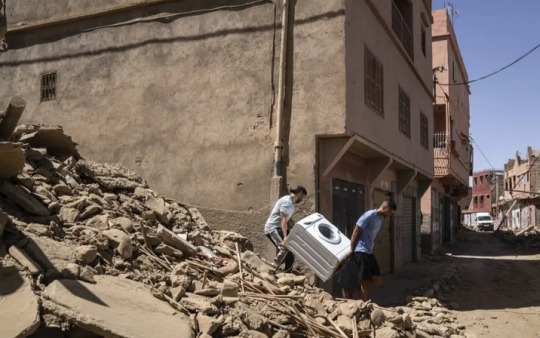
WHO WAS AFFECTED?
Of the 2,122 deaths reported as of Sunday evening, 1,351 were in Al Haouz, a region with a population of around 570,000, according to Morocco’s 2014 census.
People speak a combination of Arabic and Tachelhit, Morroco’s most common Indigenous language.
Villages of clay and mud brick built into mountainsides have been destroyed.
Though tourism contributes to the economy, the province is largely agrarian.
And like much of North Africa, before the earthquake, Al Haouz was reckoning with record drought that dried rivers and lakes, imperiling the largely agricultural economy and way of life.
Outside a destroyed mosque in the town of Amizmiz, Abdelkadir Smana said the disaster would compound existing struggles in the area, which had reckoned with the coronavirus pandemic in addition to the drought.
“Before and now, it’s the same,” said the 85-year-old. “There wasn’t work or much at all.”
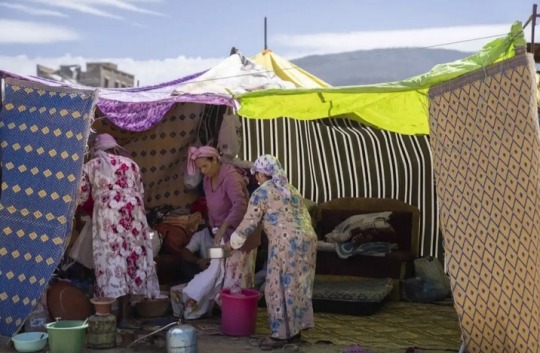
WHO IS PROVIDING AID?
Morocco has deployed ambulances, rescue crews and soldiers to the region to help assist with emergency response efforts.
Aid groups said the government has not made a broad appeal for help and accepted only limited foreign assistance.
The Interior Ministry said it was accepting search and rescue-focused international aid from Spain, Qatar, Britain and the United Arab Emirates, bypassing offers from French President Emmanuel Macron and U.S. President Joe Biden.
“We stand ready to provide any necessary assistance for the Moroccan people,” Biden said Sunday on a trip to Vietnam.
WHY IS MARRAKECH HISTORIC?
The earthquake cracked and crumbled parts of the walls that surround Marrakech’s old city, a UNESCO World Heritage site built in the 12th century.
Videos showed dust emanating from parts of the Koutoubia Mosque, one of the city’s best known historic sites.
The city is Morocco’s most widely visited destination, known for its palaces, spice markets, tanneries and Jemaa El Fna, its noisy square full of food vendors and musicians.

HOW DOES THIS COMPARE TO OTHER QUAKES?
Friday’s earthquake was Morocco’s strongest in over a century but, though such powerful tremors are rare, it isn’t the country’s deadliest.
Just over 60 years ago, the country was rocked by a magnitude-5.8 quake that killed over 12,000 people on its western coast, where the city of Agadir, southwest of Marrakech, crumbled.
That quake prompted changes in construction rules in Morocco, but many buildings, especially rural homes, are not built to withstand such tremors.
There had not been any earthquakes stronger than magnitude 6.0 within 310 miles (500 kilometers) of Friday’s tremor in at least a century, according to the U.S. Geological Survey.
Northern Morocco experiences earthquakes more often, including tremors of magnitude 6.4 in 2004 and magnitude 6.3 in 2016.
Elsewhere this year, a magnitude 7.8 temblor that shook Syria and Turkey killed more than 21,600 people.
The most devastating earthquakes in recent history have been above magnitude 7.0, including a 2015 tremor in Nepal that killed over 8,800 people and a 2008 quake that killed 87,500 in China.
WHAT ARE THE NEXT STEPS?
Emergency response efforts are likely to continue as teams traverse mountain roads to reach villages hit hardest by the earthquake.
Many communities lack food, water, electricity, and shelter.
But once aid crews and soldiers leave, the challenges facing hundreds of thousands who call the area home will likely remain.
Members of the Moroccan Parliament are scheduled to convene Monday to create a government fund for earthquake response at the request of King Mohammed VI.
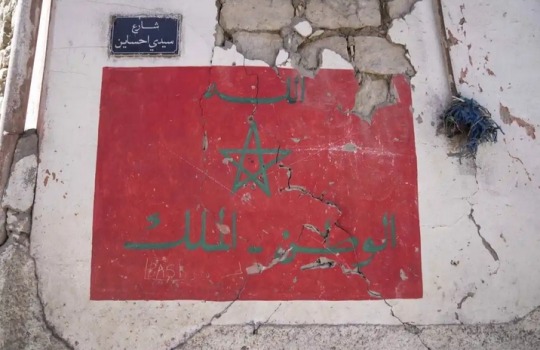
#Morocco#Morocco Earthquake#earthquake#Marrakech#Al Haouz province#Atlas Mountains#Taroudant#Chichaoua#Interior Ministry#Koutoubia Mosque#Moroccan Parliament#King Mohammed VI
92 notes
·
View notes
Text

25 Top Facts about Eastern African countries
1. Ethiopia 🇪🇹 has the largest population of (114,963,588 people.)
2. Somalia 🇸🇴 has the largest coastline in the region.
3. Kenya 🇰🇪 has the highest GDP in the region.
4. South Sudan 🇸🇸 is the leading Oil Producing Country in the region.
5. Djibouti 🇩🇯 has the smallest population in the region.
6. Tanzania 🇹🇿 has the highest point in Africa, MT Kilimanjaro.
7. Ethiopia 🇪🇹 has the strongest military in the region.
8. Ethiopia 🇪🇹 has the largest Dam, Grand Ethiopian Renaissance Dam project in Africa.
9. Kenya 🇰🇪 has the largest desert lake in the world, lake Turkana
10. Uganda 🇺🇬 supplies electricity to Kenya, Tanzania and nearby DRC regions.
11. Rwanda 🇷🇼 has the cleanest city in Africa.
12. Burundi 🇧🇮 once had monarchs.
13. Ethiopia 🇪🇹 is rich with historical sites of king's castles and Emperor's Palaces.
14. Eritrea 🇪🇷 women population in Eritrea is 3 times that of men.
15. Ethiopia 🇪🇹 has the largest lion species on earth, the Barbary lion with dark fur on the neck
16. Sudan 🇸🇩, South Sudan 🇸🇸and Ethiopia 🇪🇹 have a long history dating back 3500 years ago.
17. Sudan 🇸🇩 has some ancient pyramids on its northern region.
18. 🇰🇪 🇺🇬 🇹🇿 Has Lake Victoria which is the largest fresh water lake in Africa.
19. 🇹🇿 And 🇰🇪 have serengeti and maasai mara home to the great migration and 8th wonder of the world.
20. Kenya 🇰🇪 Mombasa Port was the first port in the region to be established in 1896.
21. Somalia 🇸🇴 was the first country in Africa to produce a pilot.
22. In Uganda 🇺🇬, less than one dollar is enough to sustain you for a day.
23. Ethiopia 🇪🇹 had the strongest Emperor and Monarchs that made them resist Colonization.
24. Tanzania 🇹🇿, lake Tanganyika in Tz is the deepest lake in Africa,
25. Lastly the longest river in the world is river Nile which is estimated to be 30 million years old...
83 notes
·
View notes
Text
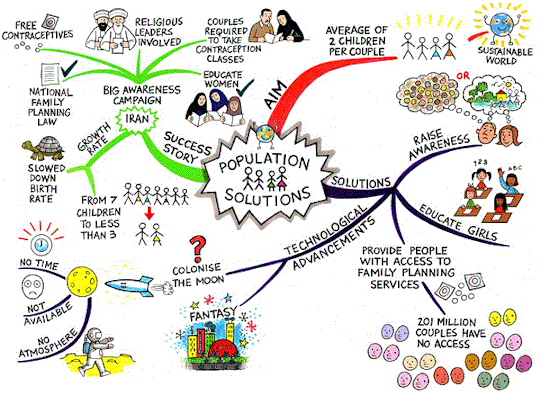
Chapter 5 . Non-white Reproduction and Same-Sex Eroticism: Queer Acts against Nature by Andil Gosine prt 1
“In Euroamerican-dominant cultural contexts, two kinds of sex have been (are) said to be toxic to nature; reproductive sex between non-white people, and sex between men.” (149)
The concept of ‘overpopulation’ has put the blame for global ecological disasters/climate change on the reproducing proclivities of the poor; due to the easy collaboration of capitalism with patriarchy and racism, that has meant the economically dispossessed non-white peoples of the world, particularly child-bearing (or potentially child-bearing) women from Asia, Africa, and South and Central American, as well as First Nations and non-white women in North America. (149)
“Although overpopulation propaganda and its material offshoots (family planing programs, coercive sterilization practices, etc.) and the criminalization and policing of sexual acts between men have been and are generally treated as distinct phenomenon, their genealogies are intimately interwoven through the projects of colonialism, development, and nation building. Read against the heterosexist, racialized formations of nature engendered by these projects (the creation of national parks,etc.), heterosexual, potentially reproductive sex between non-white people and homosexual sex, I argue threaten colonial-imperialist and nationalist ambitions. Both are “queer acts'' in that they challenge the stated norms of collaborating colonial narratives of race, sex, and gender, through which modern formations of nature have been constituted. Both fail to meet and are threatening to the white nation building projects engendered through the process of colonization, and uncritically buttressed in historical and contemporary discourses of environment and ecology.” (150)
Any acts seen to upset this agenda are constituted as not just unnatural but toxic to nature. This claim is not far removed from those made by postcolonial scholars and psychoanalysts who recognize sex as a primary site through which the terms of empire are negotiated and stipulated. (151)
The Sex of Others
The sex of “Others” has long preoccupied the imaginations of social and economic stewards of Euroamerican culture. The author provides many examples of this. These fantasies exerted a powerful influence on figures such as Columbus and “informed the organization of colonial society around the tropes of race and gender” (Rattansi 1994, 44) (152) (ie the first time Columbus saw 'America' from his ship he compared the land to a woman's breast)
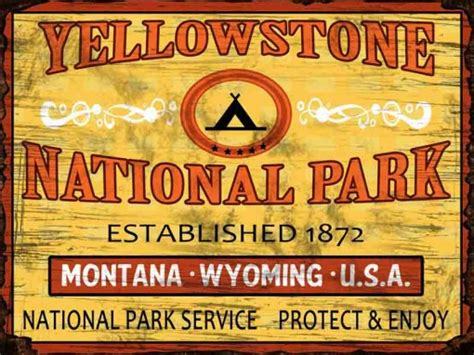
“The management of sexuality, parenting, and morality were at the heart of the colonial project” (Ann Laura Stoler 1995, 226) (152) Through the course of colonization, anxieties about non-white peoples’ sexualities would also inform the constitution of natural space across the world. The creation of “wildlife preserves' and national parks across the colonized world was predicated on the removal of their human, reproductive presence: the areas’ indigenous populations. Aboriginal peoples in Africa, North America, and Asia were viewed as both a part of and a threat to pristine nature, a contradictory argument that rested in no small part on fears about the potential reproduction and ‘abundance’ of them. (152)
Reproduction-Overpopulation
English cleric Thomas Malthus is credited with innovating the idea that the sheer growth of human population (and not what humans do) is socially and environmentally destructive. In his 1798 Essay On Population, Malthus argued that since agricultural production increases arithmetically and population soars geometrically, poverty and disease acted to check excess numbers of people who were outstripping available resources. (He was strongly influenced by his work as a colonial administrator in India for the East India Company)

Malthusian theory has been revitalized by racial theorists, birth control advocates, American military agents of imperialism and national security, ethno-nationalists, international development policy makers and project managers, and environmentalists.
The idea that population growth in non-white communities poses an ecological threat has throughout the twentieth century enjoyed considerable popular appeal, particularly in the Global North. (153)
i.e. Tragedy of the Commons-Garrett Hardin (1968)
(“Freedom to breed is intolerable”, eugenics, sterilization, against redistribution of wealth, privatized ownership of natural resources)
Most credible scholarship has outright rejected Malthusian claims. The overpopulation myth is simply bad science, unsubstantiated by lived experience and driven by particular ideological interests that serve to deflect attention from the fact that most environmental problems–global warming, pollution, deforestation, and so on–are the direct consequence of industrialization, over-consumption, and capitalist territorialization, and NOT simply the overabundance of people. (153)
For preservationist-conservationist environmental movements in North America, the myth of overpopulation was an appealing distraction from the effects of capitalism and industrialization that became especially apparent in the 1960s, effectively turning attention away from the consumption activities of white, middle-upper-class Americans who often made up the movements’ membership (Darnovsky 1992). (153)
One important point oft overlooked in Malthusianism is that in overpopulation discourse the main culprit is sex. Identification of overpopulation as the cause of poverty and environmental degradation necessarily implicates the people said to be engaged in dangerously overproducing themselves: non-white men and women living in the Global South engaged in heterosexual sex. Sex itself, then, is the act of destruction. (154)
#queer ecologies: sex nature politics desire#ecofeminism#colonialism#overpopulation#malthusian theory#critical ecology#sexuality#queer ecology#queer theory#erotophobia#environmental politics#heteronormativity#tragedy of the commons#conservation#racism#anti capitalism#eugenics
13 notes
·
View notes
Text

25 Key Insights into Eastern African Nations:
(1). Ethiopia 🇪🇹 boasts the region's largest population, with over 126 million people.
(2). Somalia 🇸🇴 holds the title for the longest coastline among Eastern African countries.
(3). Kenya 🇰🇪 leads in GDP within the region.
(4). South Sudan 🇸🇸 is the primary oil-producing nation in Eastern Africa.
(5). Djibouti 🇩🇯 has the smallest population in the region.
(6). Tanzania 🇹🇿 is home to Africa's highest peak, Mount Kilimanjaro.
(7). Ethiopia 🇪🇹 boasts the strongest military presence in Eastern Africa.
(8). Ethiopia 🇪🇹 is constructing the Grand Ethiopian Renaissance Dam, Africa's largest dam project.
(9). Kenya 🇰🇪 houses the world's largest desert lake, Lake Turkana.
(10). Uganda 🇺🇬 supplies electricity to Kenya, Tanzania, and parts of the DRC.
(11). Rwanda 🇷🇼 is renowned for having the cleanest city in Africa.
(12). Burundi 🇧🇮 once had a monarchy.
(13). Ethiopia 🇪🇹 is rich in historical sites, including king's castles and Emperor's Palaces.
(14). Eritrea 🇪🇷 has a female population three times larger than its male population.
(15). Ethiopia 🇪🇹 is home to the Barbary lion, the largest lion species with distinctive dark fur on the neck.
(16). Sudan 🇸🇩, South Sudan 🇸🇸, and Ethiopia 🇪🇹 share a history dating back 3500 years.
(17). Sudan 🇸🇩 features ancient pyramids in its northern region.
(18). Kenya 🇰🇪, Uganda 🇺🇬, and Tanzania 🇹🇿 share Lake Victoria, the largest freshwater lake in Africa.
(19). Tanzania 🇹🇿 and Kenya 🇰🇪 boast the Serengeti and Maasai Mara, famous for the great migration and considered the 8th wonder of the world.
(20). Kenya 🇰🇪's Mombasa Port, established in 1896, was the region's first port.
(21). Somalia 🇸🇴 was the first African country to produce a pilot.
(22). In Uganda 🇺🇬, less than a dollar can sustain you for a day.
(23). Ethiopia 🇪🇹's strong historical leaders resisted colonization.
(24). Tanzania 🇹🇿's Lake Tanganyika is the deepest lake in Africa.
(25). The River Nile, estimated to be 30 million years old, is the longest river globally.
[Photo credit: Devashot Photography]
9 notes
·
View notes
Text
Student Activism and Campus Protests: A History of Change and Resistance
Recent Protests Against War in Gaza
The protestors at Columbia University now occupy Hamilton Hall and have started to barricade themselves inside.
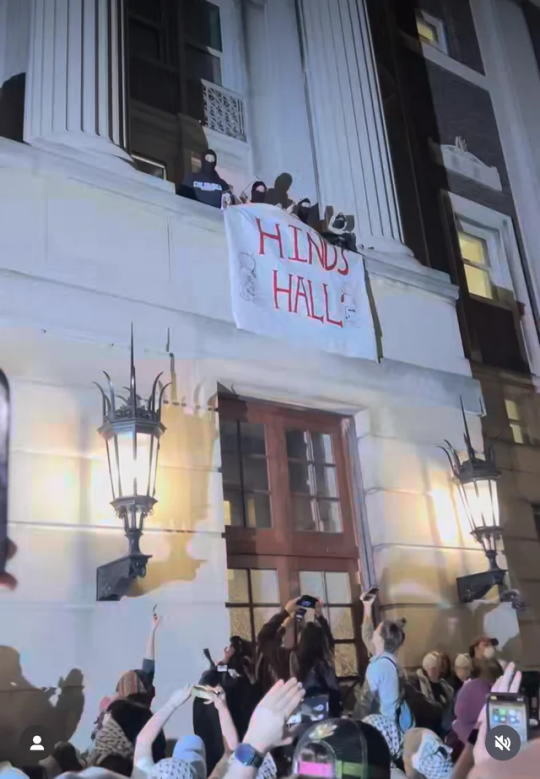
In the wake of ongoing conflicts in Gaza, a significant wave of protests has swept across dozens of U.S. college campuses, where students are urging their institutions to sever financial ties with Israel. These protests, primarily targeting universities with substantial endowments, call for the divestment from Israeli companies and the broader U.S. arms industry. Such movements are not new but are part of a long-standing tradition of campus activism. For instance, there have been protests at Columbia University that took place in 1968, 1972, 1985, 1992, and 1996.
In 1968, Columbia University saw major protests over the Vietnam War and racial discrimination, including a notable incident where students barricaded a dean inside a building, leading to violent clashes and over 700 arrests. Another protest later in the year involved 250 students occupying a hall, which ended with police intervention after 10 hours.
Continuing anti war sentiments in 1972 led to significant protests at Columbia, where students used classroom furniture to barricade themselves, ending peacefully without injuries or arrests after a week with police clearing the site through underground passages.
In 1985, Columbia students protested the university's investments in apartheid South Africa by chaining the doors of Hamilton Hall for three weeks, culminating in a moral victory when the university later divested from American companies operating there.
The 1992 student blockade at Columbia protested the conversion of the Audubon Theater, where Malcolm X was assassinated, into a research complex, highlighting student commitment to preserving significant historical sites, though the protest lasted less than a day.
In 1996, about 100 Columbia students, including some on a hunger strike, occupied Hamilton Hall to demand an ethnic studies department; while their immediate demands were not met, the university later created space for Asian and Hispanic studies, leading to the establishment of the Center for the Study of Ethnicity and Race.
These episodes highlight the enduring nature of student activism, often acting as a catalyst for institutional change and reflecting broader societal conflicts. However, these current demonstrations have stirred controversy, being labeled as "antisemitic" due to their critical stance against Israel. This has led to a heightened response from campus authorities, including threats of academic penalties and arrests, coupled with an increasing police presence, which has escalated tensions and brought national attention to the students' cause.

This leads me to question: Are these protests truly fueled from a place of antisemitism, or is this simply fear-mongering circulated by those who support Israel?
Antisemitism is defined as hostility to, prejudice, or discrimination against Jews. Criticism of Israel, like criticism of any other country, can be a part of legitimate political discourse. It becomes problematic when criticism of Israel is used as a guise for antisemitism, when it denies the Jewish people their right to self-determination, employs antisemitic stereotypes, or holds Israel to standards not expected of other countries. Thus, simply disagreeing with the policies of the Israeli government is not inherently antisemitic, much like criticizing the policies of any country does not automatically imply prejudice against its people. However, the context, content, and intent of the criticism are crucial in determining whether it crosses the line into antisemitism.
In this case, since 7th October 2023, more than 34,000 people have been killed in Gaza and approximately 77,000 have been injured by Israel.
By protesting American policy supporting Israel, these students are not showcasing acts of antisemitism. We must hold Israel to the same standards of other countries. The American public is begging for their voice to be heard. War is not the answer. It has never been the answer. Free Palestine.
#free palestine#free gaza#america#united states#columbia university#student protests#protest#activism#activist
5 notes
·
View notes
Text
Is Israel committing a “cultural genocide” on Gaza?
youtube
“Israel is erasing our Palestinian memory.”
The destruction of historic and cultural sites in Gaza has been cited as evidence in South Africa’s case to the International Court of Justice that Israel is committing acts of genocide.
Since 7 October, Israel has damaged or destroyed more than 200 heritage sites in Gaza. These include mosques, churches, libraries, museums and archaeological sites. Some date back 4,000 years.
Since Israel’s establishment in 1948, Palestinian culture and heritage have been targeted. Entire mosques, villages, and cemeteries were erased as 750,000 Palestinians were violently driven out of their homes in what is known as the Nakba or “catastrophe”.
6 notes
·
View notes
Text
okay i gotta say it: foisting alphatauri's renaming as a great tragedy of capitalism upon formula 1 racing & motorsport in general is...a bit much. especially in a sport that has been a very frequent and early adopter of sportswashing? baby, they happily race in places that have less-than-stellar current human rights records BECAUSE OF THE MONEY. it has nothing to do with attendance. you think bahrain and qatar are major ticket sellers and people were truly clamoring for races there? NO, OF COURSE NOT. it's b/c their governments poured hundreds of millions of dollars (if not more) of government money into f1 and the FIA in the name of sanitizing their nation's image in light of ongoing reports of abhorrent treatment of migrant workers and violent action against other groups inside and outside of their countries. (does really no one remember the 2022 saudia arabian gp? the fact the drivers HAD to race—despite close proximity of the track to a recent missile strike site—for fear that they wouldn't have been allowed to leave by the saudi government? no one? just me?) saudi arabia, bahrain, qatar, the uae, and azerbijan are important current examples, but this is by no means new for the sport; india, malaysia, apartheid south africa, china (which may be returning to the calendar this year—it remains to be seen if the race will actually happen), russia, peronist argentina, and turkey have all held races previously with similar intentions.
and if you want to talk about sponsors, let's actually go after the sponsors that are truly problematic. aston martin ARAMCO. mercedes-amg PETRONAS. camel, marlboro (and philip morris, in general, including their "mission winnow" shell project), orlen, shell, agip, uralkali, ftx (along with other crypto companies), among a plethora of historic sponsors.
listen: i'm not saying that the "visa cashapp racing bulls" (or "stake f1 team kick sauber", for that matter) is a great name for a team—or even a good one—but there are much bigger, much worse issues in the sport that need more attention and more concern than a shitty team name or two.
#this also goes for the outrage over las vegas#(not the safety issues but the stuff surrounding the gp in general)#let's save some of that energy for the places with active human rights violations that we brush over#especially for the places that are using primarily public funds to cover the costs of hosting events like this#thank you for coming to my ted talk#kay.txt#f1#racing bulls#sauber
7 notes
·
View notes
Text
this morning, on the bus, en route to work, i was looking at maps of historical sites of the Bronze Age and even older North Africa and the Mediterranean, and was day-dreaming and imagining if i would hypothetically accept the one-time-only ability to time-travel to -- and permanently remain “stuck” -- near the Mediterranean shores of Anatolia in 9000 BC to witness the last remnants of Ice Age megafauna mingling with the first major human architectures, or whether i would instead travel to an isolated frontier oasis in the desert on distant edge of ancient Old Kingdom Egypt to stay up all night in a small garden, lounging with my pet cat near a hearth, eating figs and watching the stars over the Sahara. and i asked myself: “why not? what are the negative consequences of maintaining my knowledge of 21st-century Earth while traveling to and living in such a distant past?” and strangely the first thing that came to mind was: “vanilla. without contact with the landscapes and Indigenous peoples of Central and South America, there would be no access to vanilla.” upon arriving at work, i immediately found a pastry flavored with vanilla bean to satiate the craving.
86 notes
·
View notes
Photo
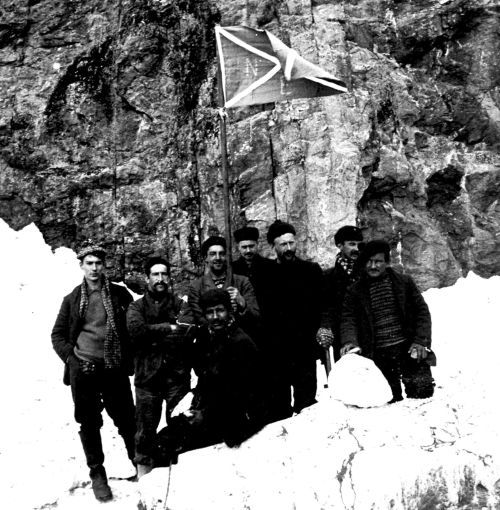



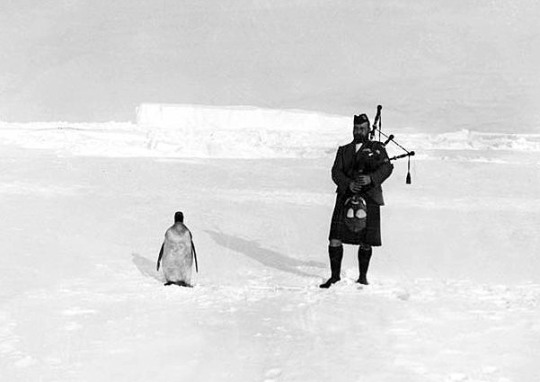
On 2nd November 1902 The Scottish National Antarctic Expedition led by William Speirs Bruce set sail from Troon on the “Scotia”.
In 1895, the interior of continental Antarctica was entirely unknown, as was much of its coastline. At the 6th International Geographical Congress a motion was adopted declaring "the exploration of the Antarctic Regions" to be "the greatest piece of geographical exploration still to be undertaken". During the following 25 years, no less than sixteen major expeditions were to be sent to Antarctica during an episode widely referred to as 'The Heroic Era of Antarctic exploration'.
Amongst the various national expeditions organized was one from Scotland. Its leader, William Bruce, was one of the most capable polar scientists of his generation. Today, his name is less well-known than those of his contemporaries Robert Falcon Scott and Ernest Shackleton, but 100 years on from the departure of his expedition, there is growing appreciation of his achievements and those of his Antarctic expedition.
Leaving Scotland on this day 1902, and reaching the Falkland Islands in December, they continued south to make the first oceanographic exploration of the Weddell Sea. Scotia, with a complement of 33, wintered at Laurie Island, South Orkney Islands. Here a meteorological observatory Omond House (pic 2) was established on 26th March 1903. The island was mapped, and when the engineer of Scotia, Alan Ramsay, died during the Antarctic winter, his grave became the first in the island cemetery. Scotia revisited the Falkland Islands in December 1903 then called at Buenos Aires, Argentina, where transfer of the meteorological station to the Argentine government was arranged through the British Legation. Scotia sailed to the Falkland Islands for a third time then back to Laurie Island where the transfer was made on 22nd February 1904
This second southern voyage saw the discovery of the northern part of Caird Coast, Coats Land (named for two brothers who had funded much of the expedition). With no landing possible on the Antarctic continent the ship then called at Gough Island and Cape Town, South Africa. A comprehensive scientific programme was conducted throughout the expedition; cine photographs and sound recordings were made.
Laurie Island is now the oldest continuous meteorological station operating in the Antarctic. The Argentine government has maintained and rebuilt it at various times. The ruins of Omond House remain; they are one of the historical sites declared under the provisions of the Antarctic Treaty. The original magnetic observatory remains in use and a building, constructed in 1905, is also preserved. The latter, now called "Casa Moneta", houses a small museum on the history of the island.
William Speirs Bruce, a natural scientist and former medical student from the University of Edinburgh and the expedition leader, had previously visited Antarctica as a member of the whaling reconnaissance from Dundee in 1892. He was a member of the Jackson-Harmsworth Expedition to Zemlya Frantsa-Iosefa, in the Arctic.
In 1907 the Bruce and his family, settled in a house at South Morton Street in Joppa near Portobello, in the first of a series of addresses in that area. They named their house "Antarctica". He died at Liberton Hospital, Edinburgh on 28th October 1921. In accordance with his wishes he was cremated, and the ashes taken to South Georgia to be scattered on the southern sea.
63 notes
·
View notes
Text
A Journey to Remember: Exploring Cape Town's Wonders

Introduction:
Cape Town, a city where the mountains meet the sea, is a destination that captivates travellers from around the world with its natural beauty, rich history, and vibrant culture. From the iconic Table Mountain to the scenic Cape Winelands, there's no shortage of attractions and experiences waiting to be discovered in this South African gem. If you're planning a Tour to Cape Town, get ready for the adventure of a lifetime as we dive into the wonders that await you in the Mother City and its surrounding regions.
Table Mountain:
No visit to Cape Town is complete without a trip to Table Mountain, one of the New Seven Wonders of Nature. Whether you choose to hike to the summit or take the rotating cable car, the panoramic views of the city, coastline, and surrounding landscapes are simply breathtaking. Be sure to visit at sunrise or sunset for an unforgettable experience and don't forget your camera to capture the stunning vistas.
Cape Peninsula:
Embark on a journey along the scenic Cape Peninsula, where rugged cliffs, pristine beaches, and charming coastal towns await. Drive along the breathtaking Chapman's Peak Drive, explore the Cape Point Nature Reserve, and visit the adorable African penguins at Boulders Beach. Don't miss the opportunity to take a dip in the refreshing waters of the Atlantic Ocean at one of the peninsula's many beautiful beaches.
Robben Island:
Delve into South Africa's rich history with a visit to Robben Island, a UNESCO World Heritage Site and former political prison. Take a ferry from the V&A Waterfront to the island and tour the prison complex, where Nelson Mandela and other anti-apartheid activists were once incarcerated. Hear firsthand accounts from former political prisoners and gain insight into the country's struggle for freedom and democracy.
Cape Winelands:
Indulge your senses with a day trip to the Cape Winelands, where lush vineyards, historic estates, and award-winning wines await. Explore charming towns such as Stellenbosch, Franschhoek, and Paarl, and sample a variety of wines and gourmet cuisine at some of the region's finest wineries. Don't forget to savour the stunning scenery of rolling hills and mountain ranges that make the Cape Winelands a feast for the eyes as well as the palate.
Kirstenbosch Botanical Gardens:
Escape the hustle and bustle of the city and immerse yourself in the tranquillity of Kirstenbosch National Botanical Garden. Located at the foot of Table Mountain, Kirstenbosch boasts an impressive collection of indigenous plants, including rare and endangered species. Take a stroll along winding paths, discover unique garden sculptures, and enjoy a picnic amidst the breathtaking natural surroundings.
Township Tour:
Gain insight into Cape Town's diverse cultural landscape with a township tour, where you'll have the opportunity to visit vibrant communities such as Langa, Khayelitsha, or Imizamo Yethu. Meet with residents, learn about their traditions and customs, and support local businesses as you explore the streets, markets, and cultural centres of these dynamic neighbourhoods.
Cape Town City Tour:
Discover the rich history, vibrant culture, and iconic landmarks of Cape Town on a city tour. Visit historic sites such as the Company's Garden, Castle of Good Hope, and District Six Museum, and explore the colorful streets of Bo-Kaap with its distinctive Cape Malay architecture. Whether you're wandering through bustling markets or admiring street art in the city's vibrant neighbourhoods, there's always something new and exciting to discover in Cape Town.
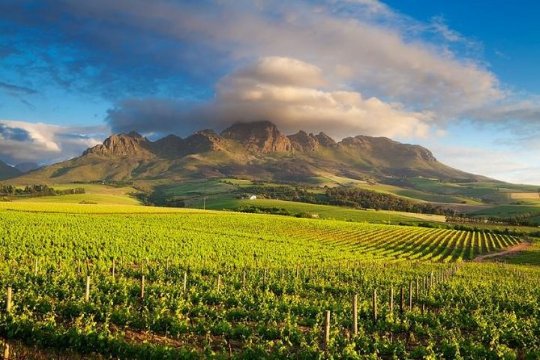
Conclusion:
Cape Town Tours Packages promises an unforgettable journey filled with breathtaking scenery, rich history, and vibrant culture. Whether you're hiking to the summit of Table Mountain, exploring the charming coastal towns of the Cape Peninsula, or indulging in wine tasting in the Cape Winelands, the experiences that await you in the Mother City are sure to leave a lasting impression. So pack your bags, lace up your hiking boots, and get ready for the adventure of a lifetime in Cape Town, South Africa.
3 notes
·
View notes